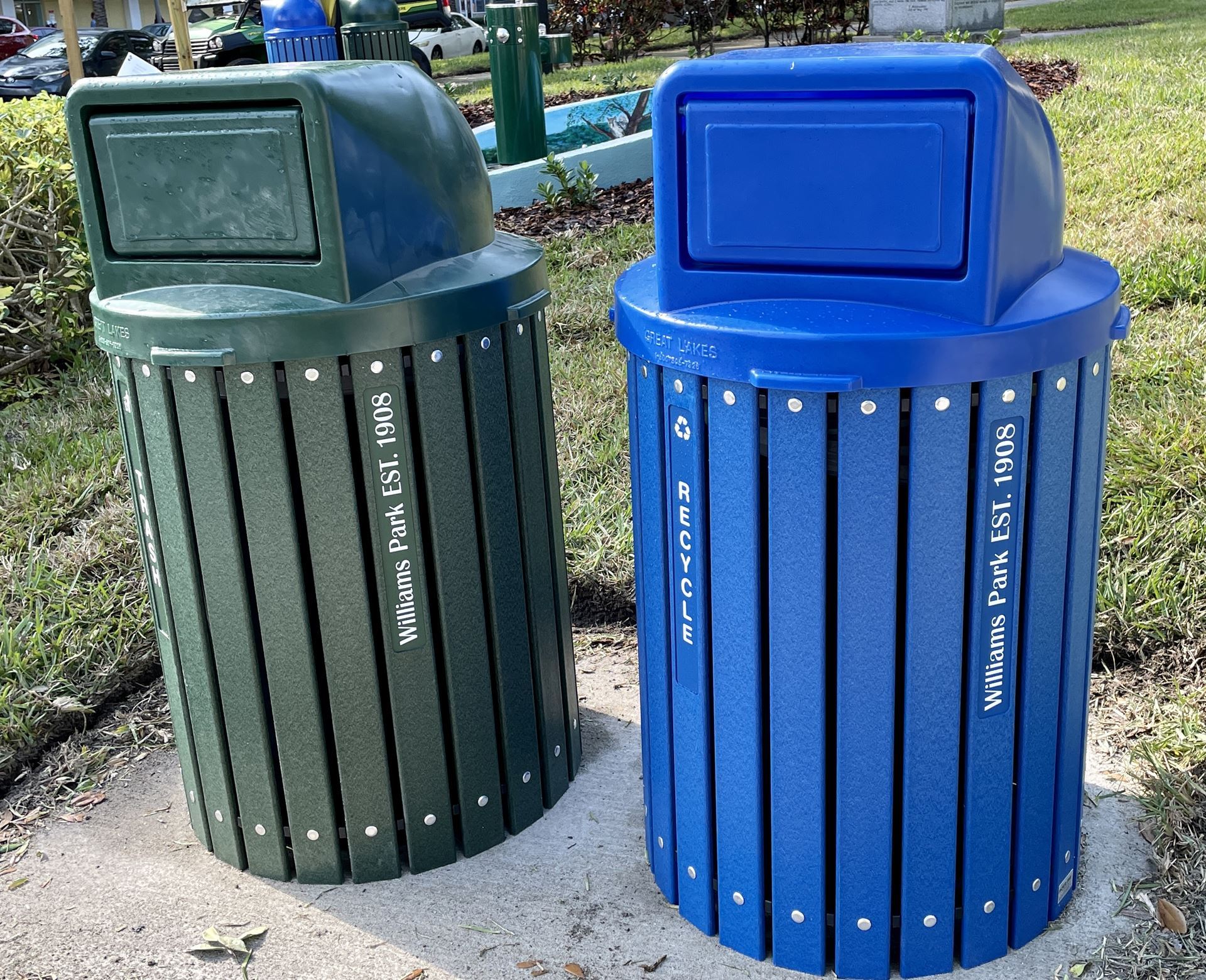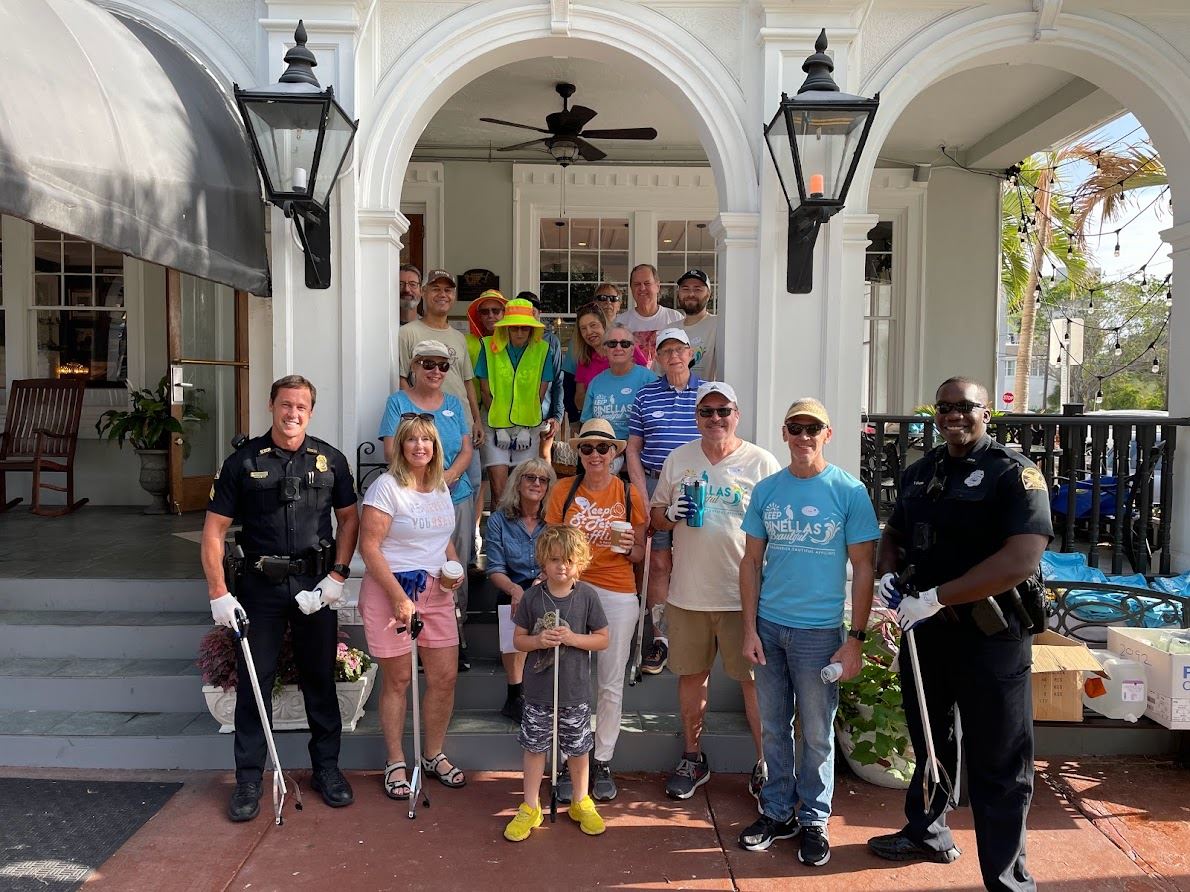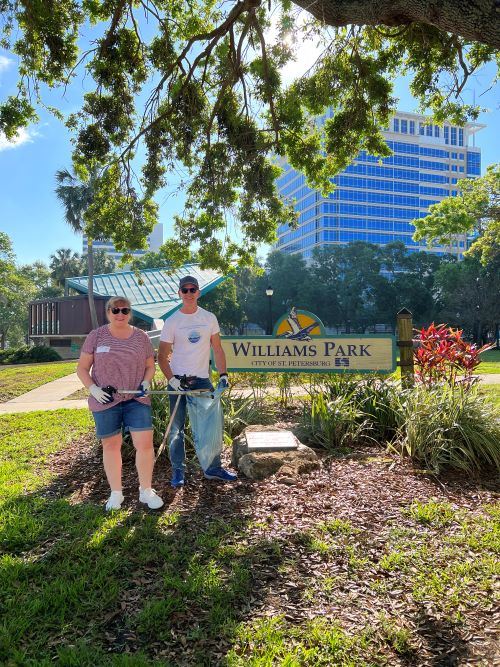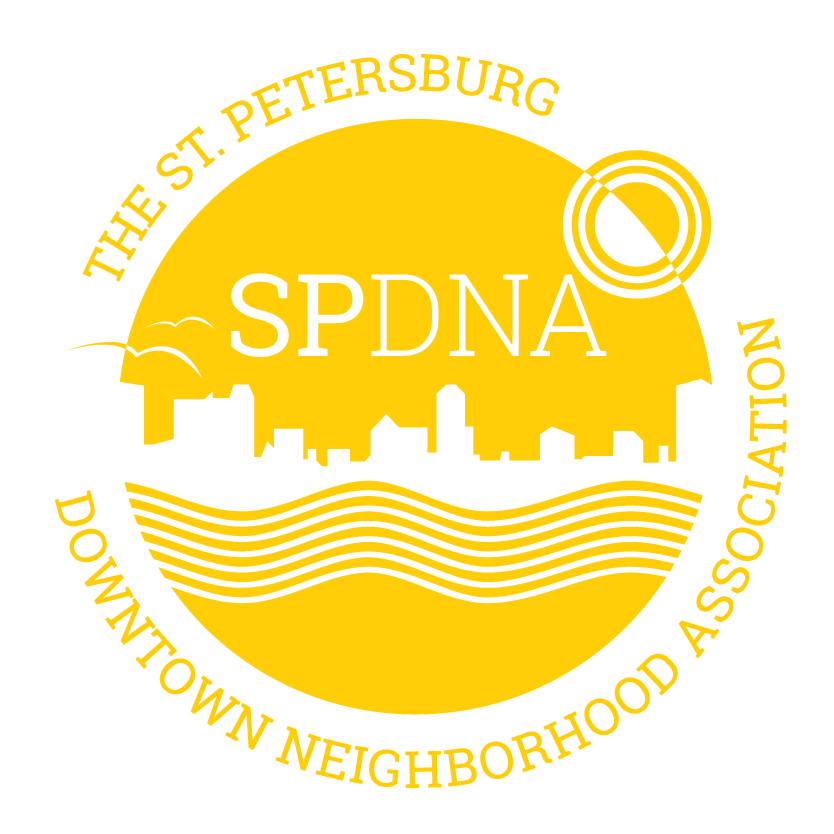SPDNA's Support of Williams Park
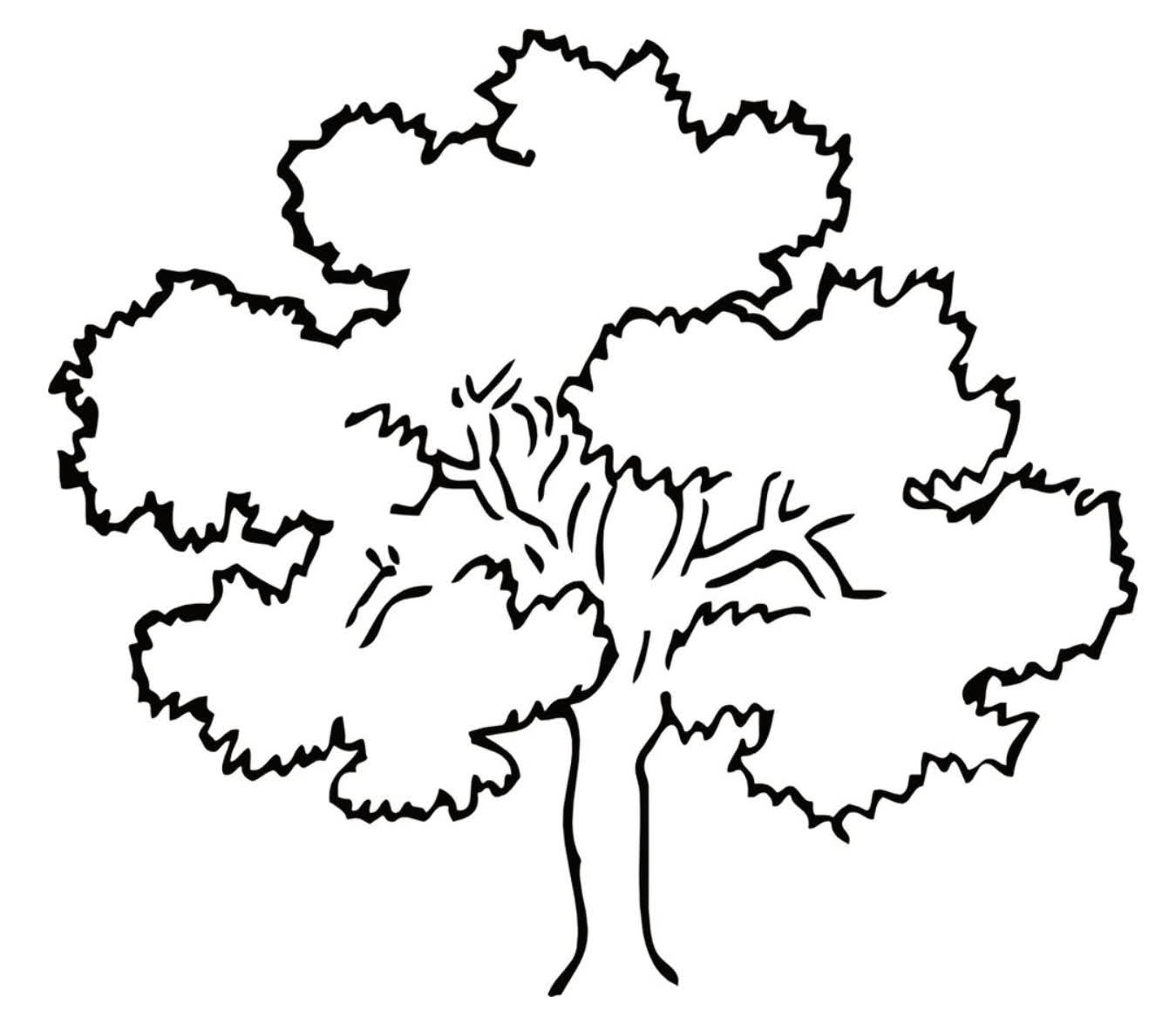
Park est. 1908
Our Journey
In 2022 SPDNA entered into talks with the parks department for some improvements to the park. The area we decided to focus on is the northeast corner of the park where there was a dedication plaque commemorating Esther Wright. After Esther's death in 1980, Corrine Freeman, the current mayor of the city promised to honor her commitment to the small animals she fed daily. Wright was the Bird Lady who tricycled throughout St. Petersburg feeding birds, squirrels, cats and seagulls. She was featured as part of a segment on the television series Charles Kuralt's On the Road making her famous in 1975. Although she lived on social security, Esther still bought food for the animals. During our research we were able to uncover more of her history with some help from Preserve the Burg past president Emily Elwyn and Phil Graham Jr. Landscape Architect and former president of the Waterfront Parks Foundation. The parks department replaced the concrete drinking fountain with a new ADA compliant /pet friendly drinking fountain.
Before


After (Spring 2023)
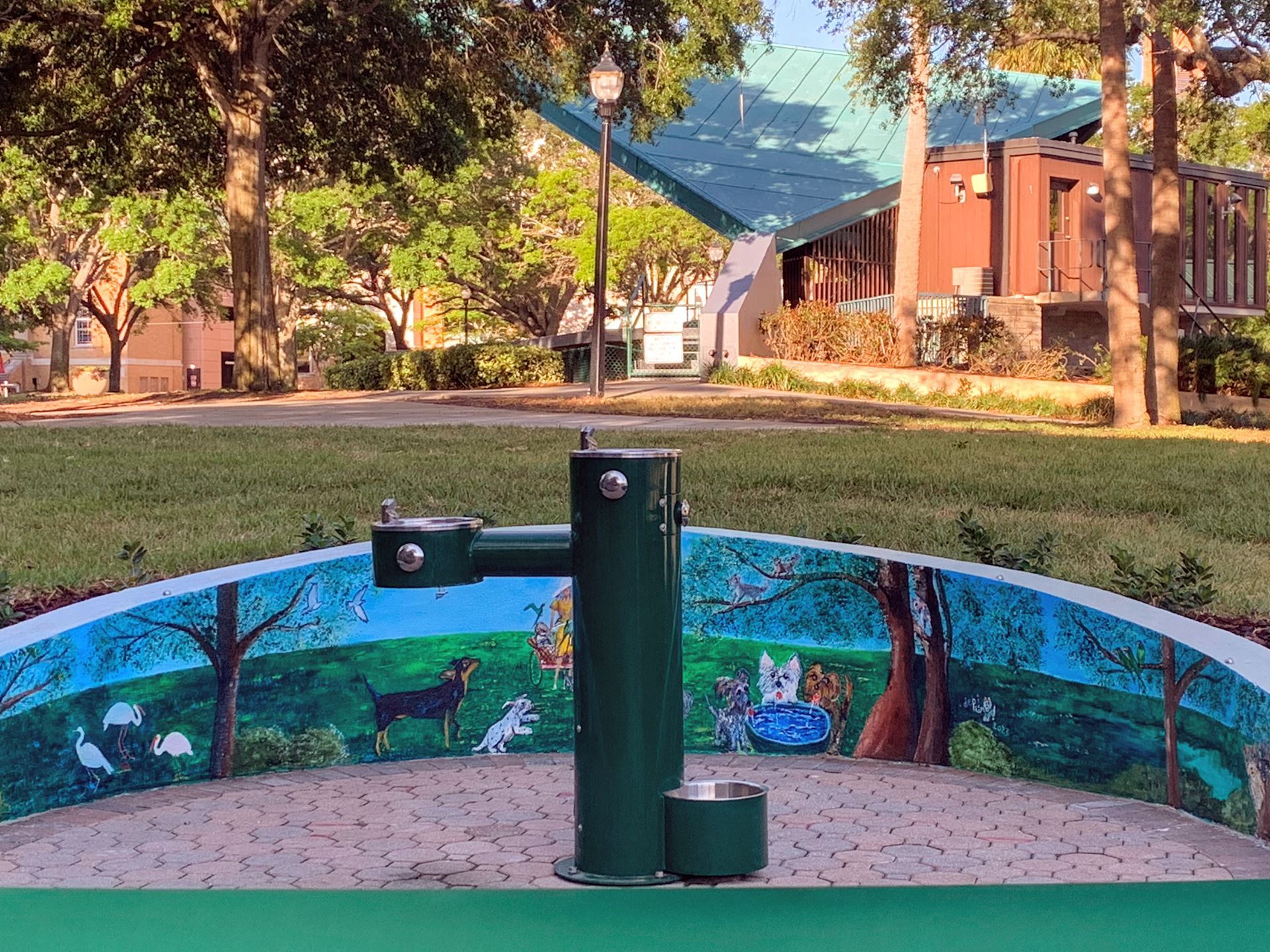
Free Events
Yoga in the Park- Sponsored by the Mayor's Grant and The Downtown Neighborhood Association during cooler months
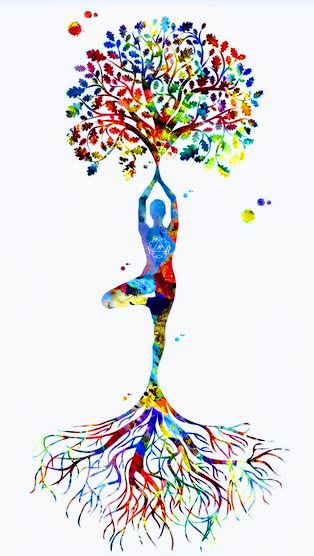
During the Spring of 2024 Free yoga classes were held on the last Tuesday of the month at 5:30PM.
BYOM (mat) and join your friend and neighbors.
Classes currently on hold due to uncomfortable hot and humid weather..... check back late Fall.
Member input for reactivating Williams Park (February 2022- Special Meeting)

The Downtown Neighborhood Association partners with local organizations to bring programming to the park.
Keep Pinellas Beautiful supplies all materials for Williams Park Clean Ups in April and November. DNA sponsors coffee at the Cordova Inn.
PSTA, Carfree St. Pete and DNA collaborated for World Car-Free Day
.jpeg)
Neighborhood Partnership Grant funded by the St. Pete DNA and theCity of St. Petersburg Parks and Recreation Department

Plans for the original memorial drinking fountain in the northeast corner of the park designed by Phil Graham Jr.
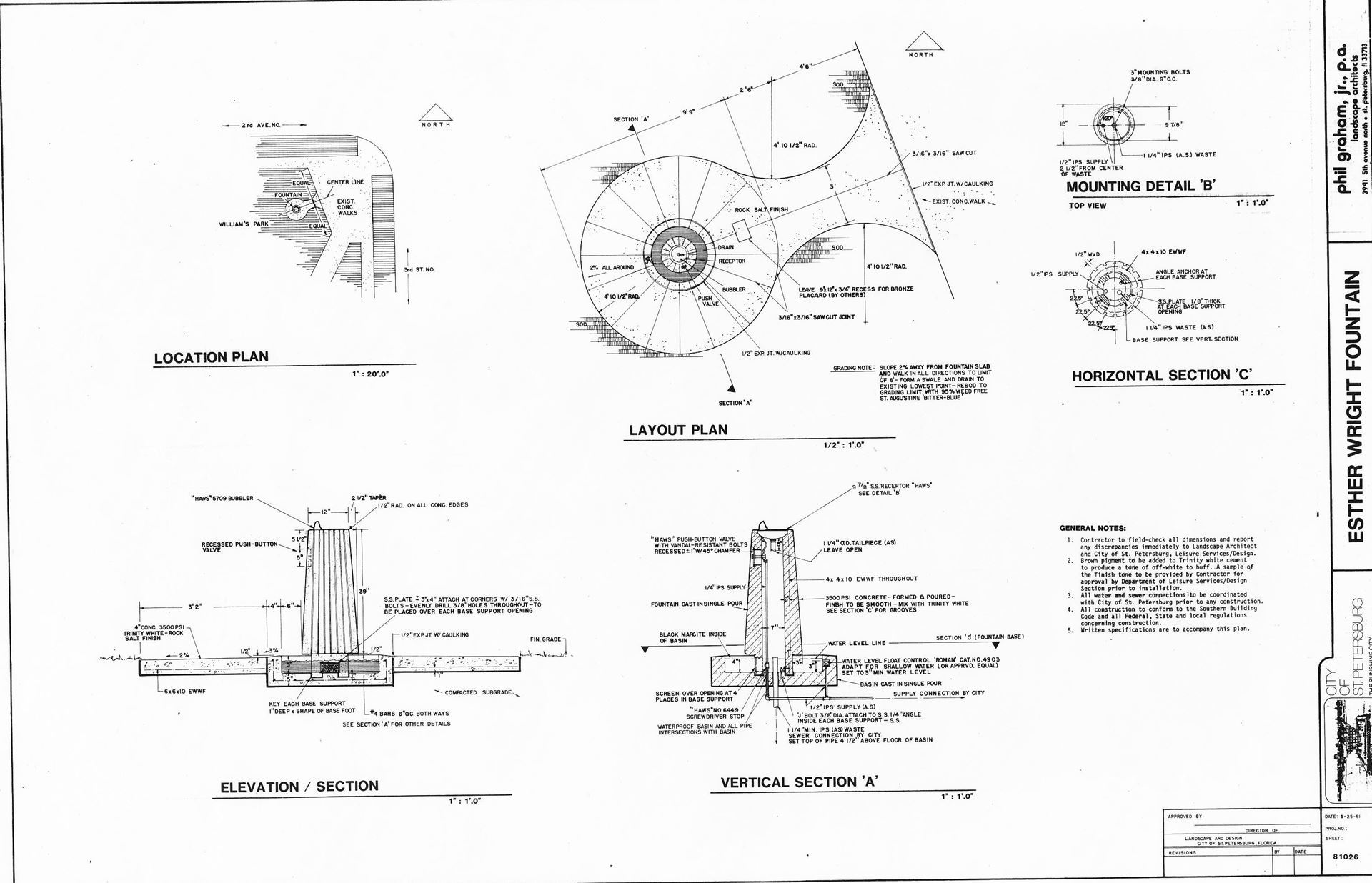
Artist, Deb Primosh, rendering of Esther and the animals she cared for daily.

Branded trash and recycle bins in the northeast corner of the park.
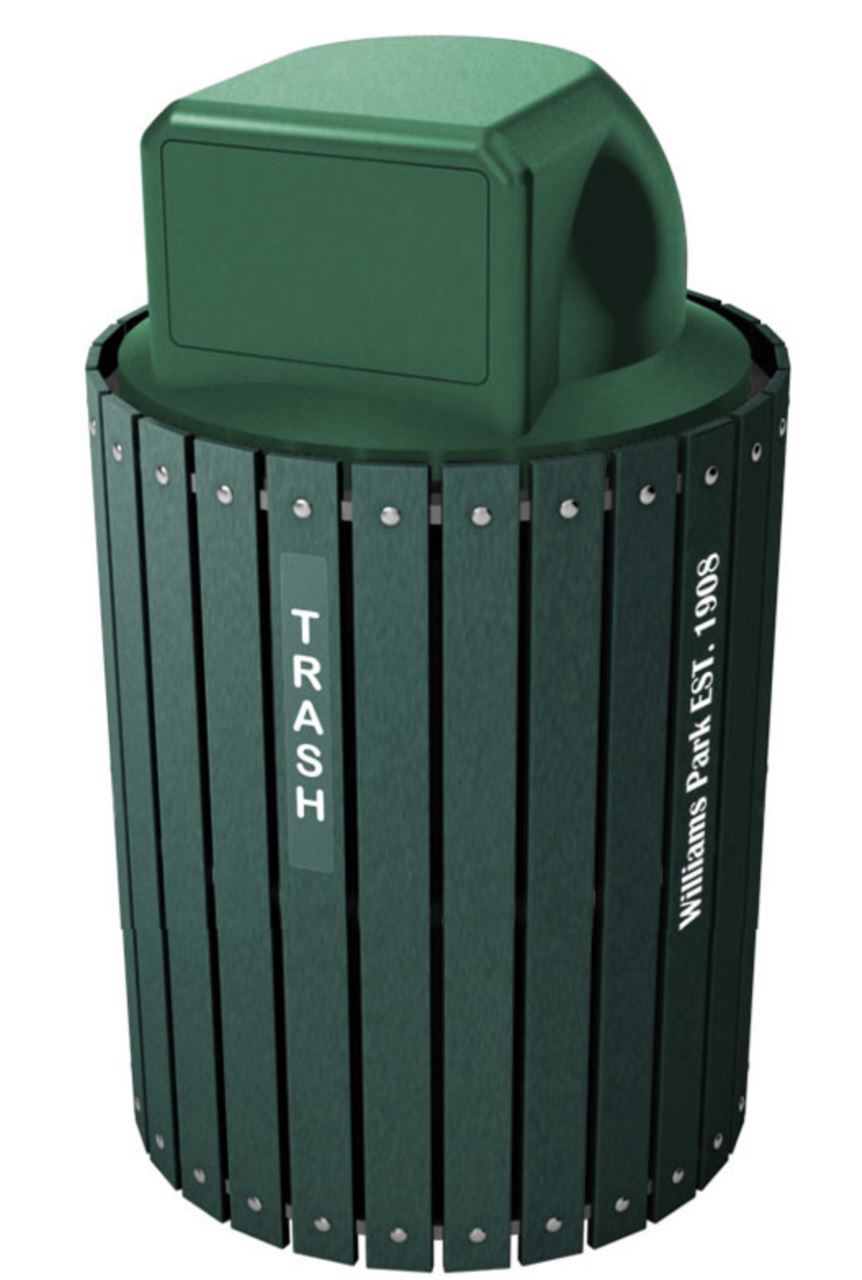
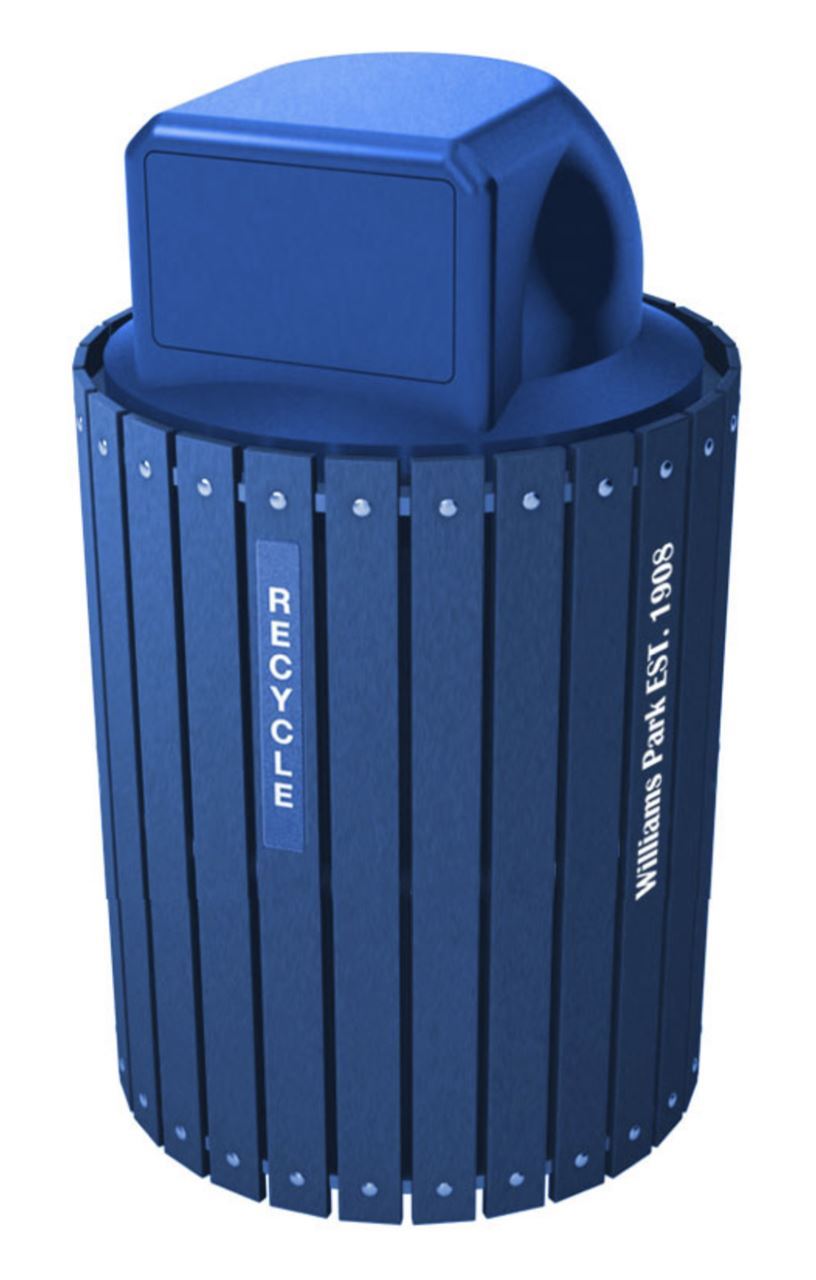
Before and After (progress as of 2.28.23)
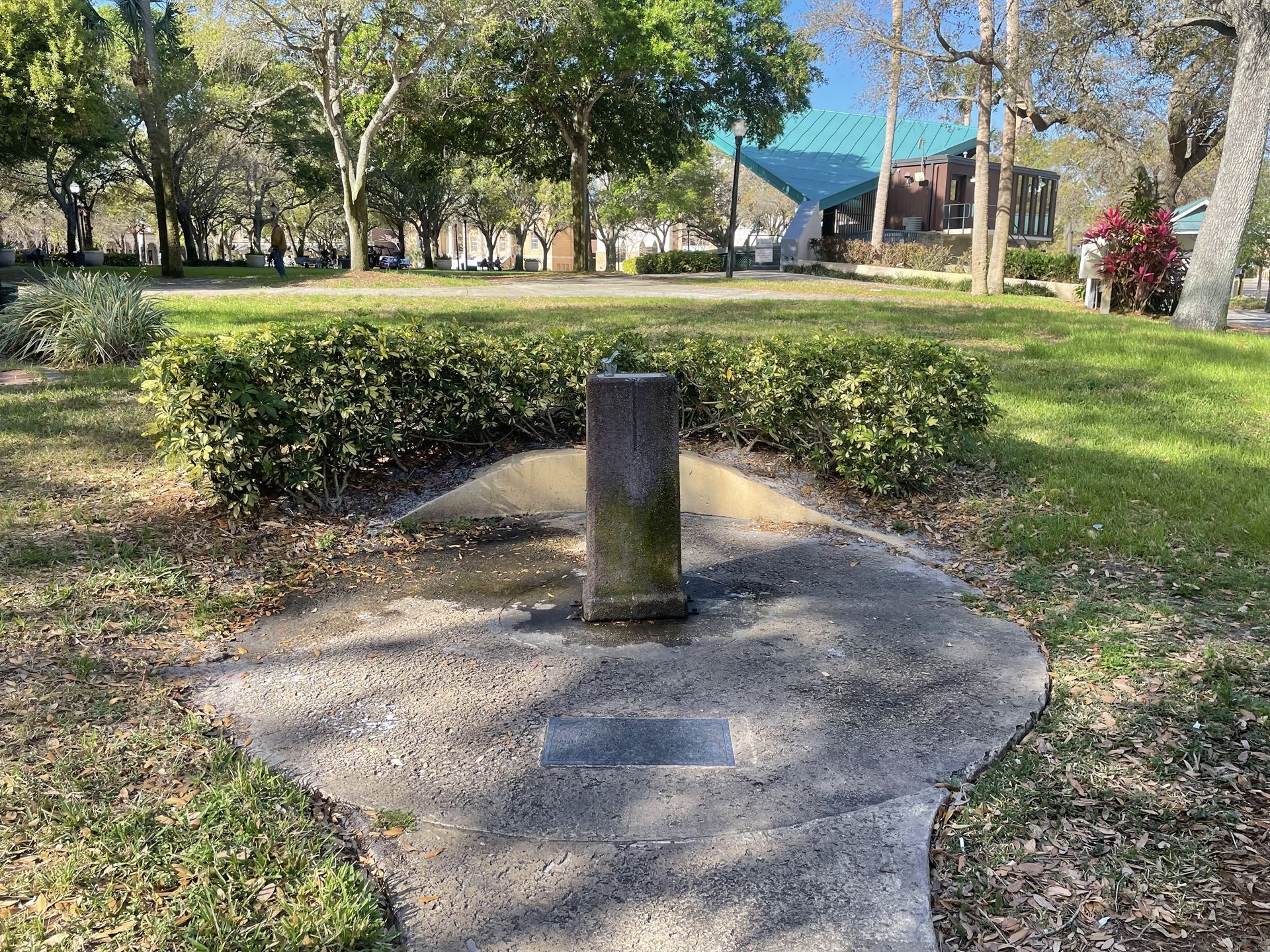
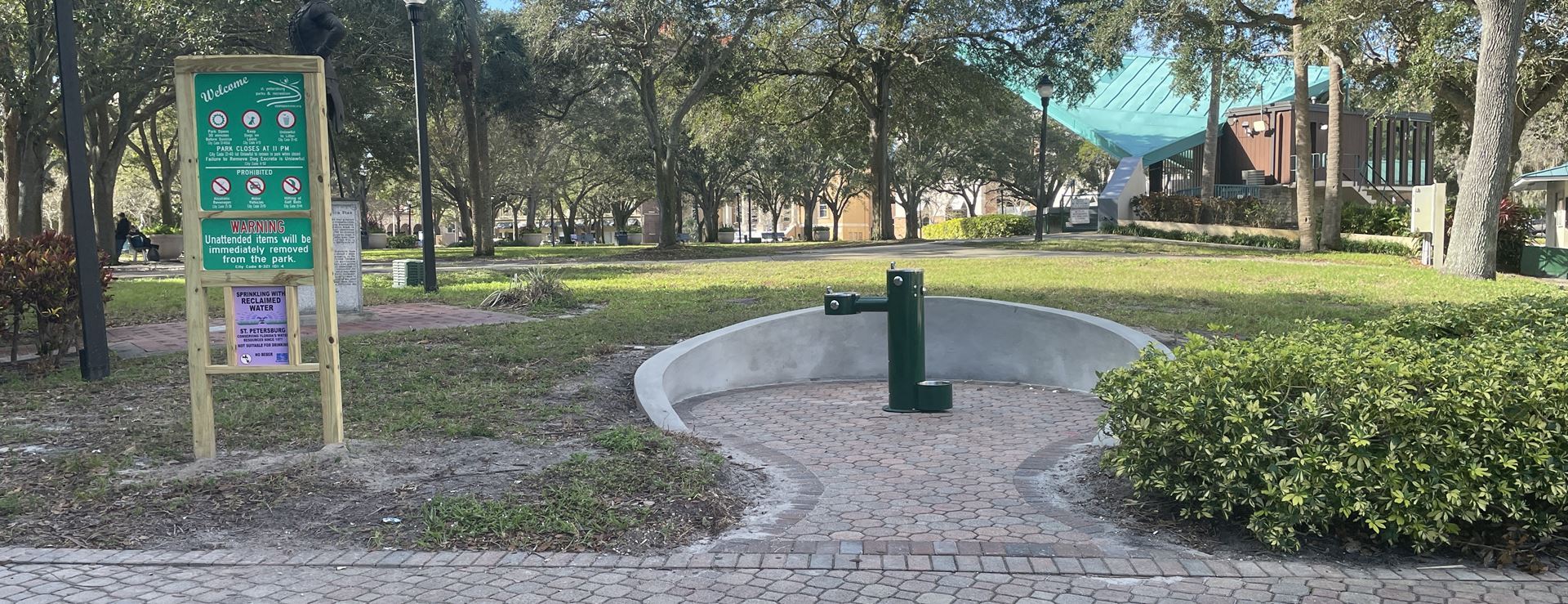 progress as of 2/28/23
progress as of 2/28/23 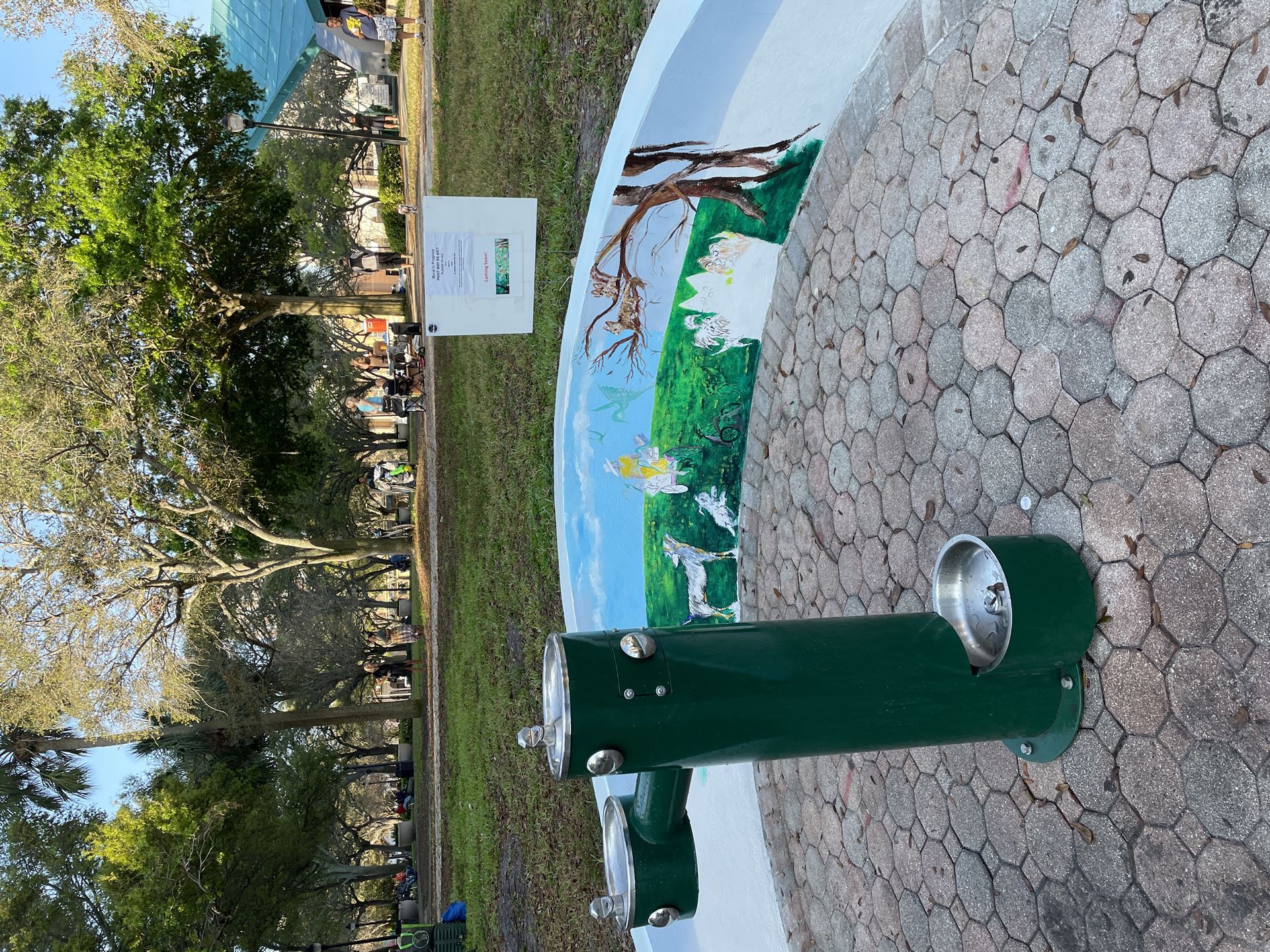
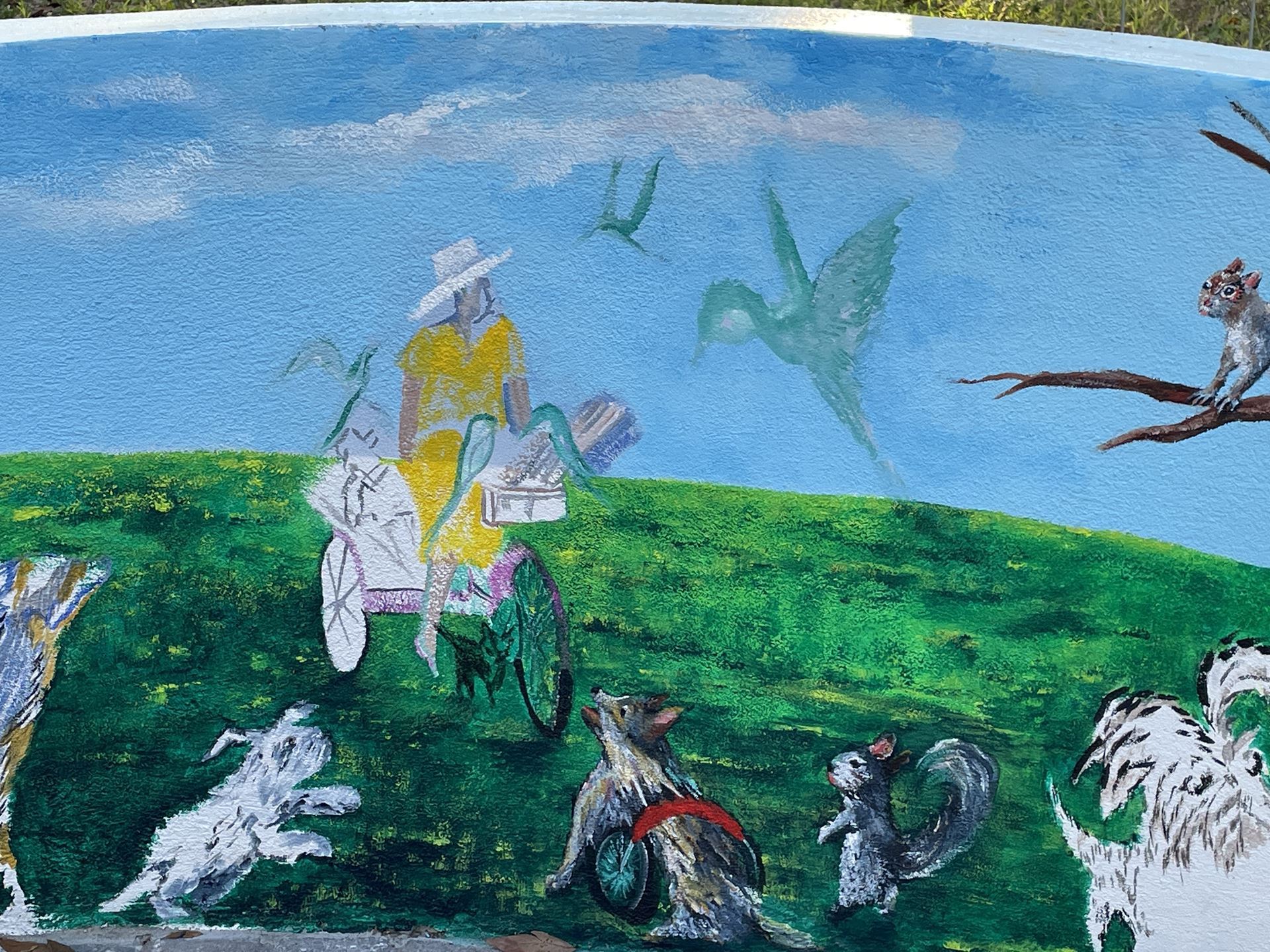
- Additional improvements funded with the grant:
- Two pet stations have been installed. The neighborhood association will monitor and refill as necessary.
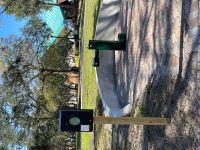 NE corner entrance pet station
NE corner entrance pet station 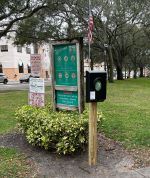 SW corner entrance pet station
SW corner entrance pet station-
-
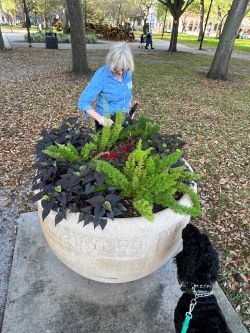
-
Refresh of the planters along the path closest to the stage. (completed 2/22/23)
-
Dedication mural on the short wall behind the drinking fountain. Join us on April 1st at 9:30AM. (see artist's rendering above)
-
History of Williams Park
According to Will Michaels author of Making of St. Petersburg, "Williams Park was established in 1894, six years after the city was founded and platted. The land, a whole city block, was donated by John C. Williams in 1888. From 1888 until 1893 the park remained in its frontier state with oaks, pines, and palmetto bushes. Early settler John Freeman Murphy even recalled shooting a deer and wild boar there. Along its northern side was a natural ditch which carried off the overflow waters from Mirror Lake. At that time it was mainly used for picnics." You can read the entire chapter on Williams Park here. The neighborhood association has been involved in past revitalization efforts mentioned in this chapter.
The St. Petersburg Museum of History has provided this timeline demonstrating the progression from designated parkland, to City Park, and finally to Williams Park.
- 1888: In the original plat of the city--then just a village--the block now known as Williams Park was designated as park space. It was referred to as "the Park" or "City Park" for quite some time.
- 1893 OR 1894: Karl Gismer's Story of St. Petersburg (1948) says the following:
- "Work of improving 'The Park,' now known was WIlliams Park, was started during the nineties, and credit for the improvement must go to the same group of women who built the first sidewalks. The block square park was set aside for public use in the original town plat but nothing was done to clear out the undergrowth and grub out the palmettoes until the women organized the Park Improvement Association in 1893. [...] Actual work of improving the park was started on 'Park Day,' held after an official proclamation had been issued by Mayor David Murray late in 1893. Coffee, cake and icecream were served by the women, and the women and men together began laying walks and clearing out the undergrowth. After Park Day, the men's interest in work died down and the women had to carry it on themselves. They completed the walks, built a fence to keep out wandering cows and hogs and in 1895 raised enough money to erect a bandstand." (87) It is unclear when exactly when Park Day occurred, but it appears to have been sometime in 1893. It should also be noted that it was still called "City Park" at this time.
- 1908: Karl Grismer's History of St. Petersburg (1924) suggests that 1908 is when the park began to be called "Williams Park," and this is indeed where this name begins to gain popularity in the St. Petersburg Times. There was the occasional mention before this point, but after 1908, "City Park" falls out of common use. It would also seem as though a push for the park's official renaming reached some sort of head in July of 1908. The Woman's Town Improvement Association (WTIA), the successors of the Park Improvement Association, discussed the topic more than once in 1907 and 1908. Excerpts from their meeting minutes are as follows:
- 9/3/1907: "Mrs. Livingston made a motion to see [City] Council and make arrangements to name the Park. Mrs. Livingston appointed to attend to the matter."
- 11/5/1907: "The naming of the Park was taken up. Mrs. Livingston reported to the President that she had seen two of the members of the council, Mr. Ed T. Lewis and Mr. Springstead. They said it was not necessary to go before the council with the matter. The ladies felt that as the park was City property it would not be right for them to take the responsibility of naming it, so Mrs. Gorgh(?) was appointed to see the Council in regard to the matter. Mrs. Strom and Mrs. Chase were appointed to see Mrs. [Williams] Armistead about getting a memorial of some kind 'in the park' to Mr. Williams."
- 12/3/1907: "Mrs. Chase visited Mrs. Armistead. Mrs. Strom, being sick, had not the pleasure and confidence of her presence. Mrs. Armistead thinks our naming the park only right and advisable. Also thinks it should be marked by a tablet or bust in his memory. Had no special thing to suggest but thought a drinking fountain, as we had none, the thing. Told her we were without funds. Would [be] hard to get to work to have anything and had understood she would give liberally whenever we undertook it. She said, 'When we have decided what to have, she will help.' Would not tell how much. Said she could not tell until she knew how much it would cost us. Mrs. Armistead asked Mrs. Chase to take her name into the association."
- 7/31/1908: A meeting of the WTIA Executive Committee is stated to have been held in "City Park."
- 8/4/1908: A meeting of the general WTIA is stated to have been held in "Williams' Park."
The following can be found on Wikipedia -
The modern bandstand in the park was designed in 1954 by St. Petersburg architect William B. Harvard, whose work also includes the St. Petersburg Pier. In 1955 it was the recipient of the Award of Merit from the American Institute of Architects. It is used for outdoor concerts during the noon hour and on weekends, but for groups which tend to attract smaller crowds.
It was state-of-the-art in 1954, when it was built. But in 2022, the Williams Park Bandshell is strictly old school. Parks and Recreation, through a study created by the Harvard Jolly architectural firm, will ask the City Council to approve $1.5 million for bringing the Williams Park Bandshell into the modern age.
Click on this link for the Proposed Plans for Bandshell updated 1/4/23
-
-
